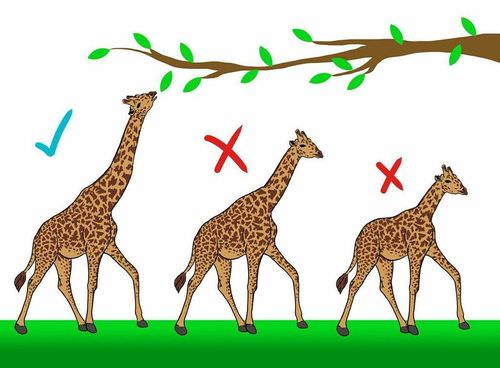Evolution Methods
Evolution: changes in a species over time, leading to new species


**Theory of Evolution by Natural Selection: inherited traits of a population change over time as the best adapted organisms survive and reproduce, passing on the good traits**
Natural selection occurs when:
- There is some variation in the inherited traits of organisms in a species
- Some traits give individuals an advantage over others in surviving and reproducing
- The individuals with those traits will be more likely to reproduce and pass on traits
Other methods of evolution
Speciation: development of a new species
- only occurs if 2 branches of a species become unable to produce viable offspring
(viable = able to survive and reproduce)
Geographic Isolation (or Allopatric Speciation): groups of the same species become geographically isolated for long periods, and become different species
-
separated by mountain ranges, canyons, bodies of water, deserts, etc
-
Example: Squirrels separated by the Grand Canyon
- Albert Squirrel (on the South Rim)—white bellies and dark tails
- Kaibab Squirrel (on the North Rim)—black bellies and white tails
-
Example: Squirrels separated by the Grand Canyon

*started as one squirrel species, until two populations ended up on opposite sides as the canyon formed; now they’re two separate species that can’t mate
Sympatric Speciation: one species evolves into two different species without being separated geographically, generally due to behavioral differences
-
Reproductive Isolation: 2 populations of a species stop mating with each other
- have different mating locations, mating times, or mating rituals
- over thousands of years, each population evolves in a different direction
Example: different groups of orcas hunt different species, eat different food, sing different songs, and have different social interactions
**in time, may evolve into different species
Species diversity: the number of different species in an area (millions in the world)
- as environments change, organisms must constantly adapt to those changes
-
high diversity increases the chance that some species will survive
- Example: asteroid killed dinosaurs, but mammals survived
